Wildlife around Scotland’s coast...
A kayaker’s view
Due to the often remote locations of our trips we have the opportunity to view some of Scotland’s most exciting wildlife. Waking up to the sounds of singing seals or the haunting calls of the 3 species of divers is an experience never forgotten. Sam has even had the rare privilege of being kept awake by a corncrake when camped on Lunga.
The mammal species on show range from Otters to Minke whale and the sound of a whale surfacing to breathe on a flat calm sea is again an experience to treasure.
Possible wildlife sightings - Mammals
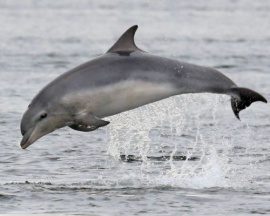
Bottlenose Dolphin
Bottlenose dolphins can be found across much of the world’s oceans. The Scottish ones live around the species northern limit and are the largest of the lot.
The Moray firth is home to one of the largest populations in the UK. Our Moray coast trips give us a great opportunity to see these magnificent creatures.
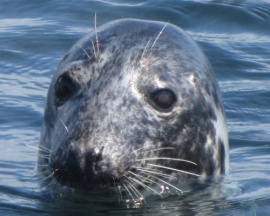
Grey Seal
Scotland is one of the best places in the world to see the Atlantic grey seal. The grey seal is the larger of the two species that breed around our coast.
Seals begin to arrive at breeding beaches from the middle of September and pups are born from the end of September to the middle of December.

European Otter
Today, the otter is flourishing across Scotland and the population is estimated to be around 8000 otters. Coastal otters are sometimes called “sea otters” but they are exactly the same species as the animals that live inland. coastal otters tend to have much smaller home ranges due to the abundance of fish and crustacean prey.
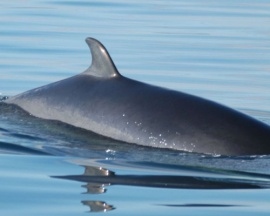
Minke Whale
This is the smallest of the baleen whale family, it’s also the most common whale to be found in Scottish waters. The best time to see minke whales in Scotland is from the end of May to September. The sightings we have had while paddling have been primarily of solitary animals, with the best sightings around the Small Isles, Ardnamurchan and the Outer Hebrides.

Common Seal
Also known as the harbour seal, the common seal is in fact less common than the grey seal. Females give birth to a single pup in June or July each year. As soon as a pup is born its mother forms a bond with it by smelling and calling it.
Adult common seals typically weigh about 80-100 kg. Males are slightly bigger. Common seals are long lived with individuals living up to 20-30 years.

Basking Shark
The basking shark is the second largest living fish after the whale shark and is one of three plankton eating sharks. The most impressive feature of the shark is its mouth which opens up to 3 feet wide.
The best time to see basking sharks is during the summer months (July - Sept) We had a great sighting of them feeding in a bay on the northern end of the Ardnamurchan peninsula.
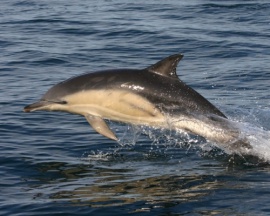
Common Dolphin
Common dolphins have beautiful markings, with a mix of black, white, grey and yellow. They have a complex system of calls to communicate with each other and help them find prey. They can often be seen in quite large pods and the Hebrides, Mull and the Small Isles are hotspots for spotting them. There used to be 2 that lived in Loch Carron and they would come to the kayaks as we paddled past.
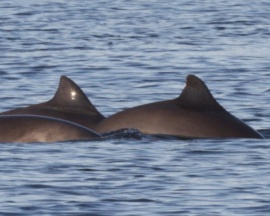
Harbour Porpoise
The harbour porpoise is the smallest cetacean found in Scottish waters. A porpoise breathes between 4 and 5 times every minute and quite often when kayaking on a flat calm day it is the sound of its breathing that highlights its presence. They tend to be spotted alone or in small groups. They may form larger groups where there’s an abundant food source.
Possible wildlife sightings - Birds
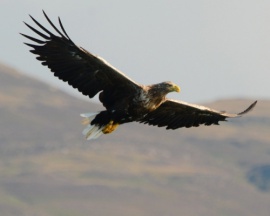
Sea Eagle
The sea eagle is the fourth largest eagle in the world and is Scotland’s largest bird of prey. It only gains its distinctive white tail as an adult, at around five years of age. They were successfully reintroduced at the third attempt on the Isle of Rum in 1975, it was 10 years later that the first breeding success of reintroduced birds was recorded. Mull, the Isle of Skye and the Outer Hebrides are all great locations for spotting the birds today.

Puffin
The species we have here in Scotland is known as the Atlantic puffin. The most recognisable feature of a puffin is probably the colourful bill, however they are not like this all year round. In winter, puffins shed their outer bills, leaving smaller, duller ones behind. Atlantic puffins spend the winter out on the open ocean so are best spotted between April - August. Lunga, one of the Treshnish islands is a great location for seeing them.

Black Guillemot
The black guillemot is a very distinctive looking seabird. No other British breeding bird shares its uniform blackness which is broken only by a white wing patch, it also has very red feet. Part of the Auk family they are smaller than both the guillemot and razorbill. Unlike the other Auk species they are mostly solitary or congregate in small groups. They can be spotted on most of the west coast trips although Orkney and Shetland are particular strongholds.
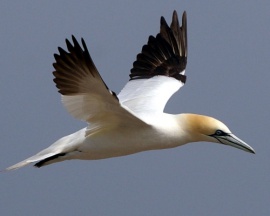
Gannet
The gannet is Scotland’s largest seabird, the specific type found here is the northern gannet. They come to Scotland to nest and breed in huge colonies around the coast. They migrate south between August and October and travel back to our shores at the start of the year. Our country holds over 40% of the worlds total population and around 180,000 pairs breed in Scotland. Bass Rock in the Firth of Forth is the largest gannet colony on earth.
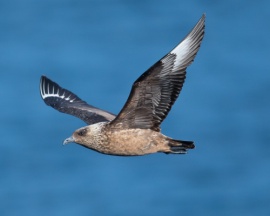
Great Skua
The great skua is an aggressive pirate of the seas, deliberately harassing other birds to steal a meal. They are also known widely in Scotland as a bonxie.
They show little fear of humans, anybody getting close to the nest will be dive bombed repeatedly. The birds migrate to the northernmost Isles of the UK from their wintering grounds off the coast of spain and Africa. The world’s largest colony is on Foula, off Shetland.
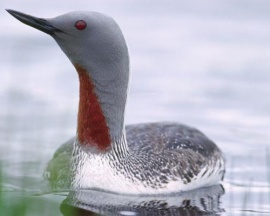
Red Throated Diver
The smallest of the UK’s divers, they have a distinctive haunting call and put on amazing water courtship displays. The species has been helped by positive conservation action, including the provison of artificial islands for the birds to nest on. Typically they would tend to breed around small lochans within open moorland. Shetland, Orkney and the Outer Hebrides have the greatest abundance of red throated divers.
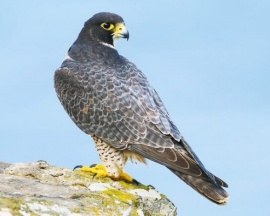
Peregrine
The peregrine is a large and powerful falcon, it is known for its hunting speed, once it spots prey it stoops at speeds of up to 180 mph. To enable the bird to breathe at this speed, it has special baffles in its nostrils. The peregrine's breeding habitat has been seen traditionally as craggy hill country and sea cliffs. It is whilst kayaking below these towering sea cliffs teaming with birdlife that we are most likely to get a glimpse of the peregrine falcon in action.

Arctic Tern
The arctic tern is a medium sized tern which nests in colonies on sand and shingle beaches along the coast. Like most terns they will attack intruders threatening their nests, so the unsuspecting sea kayaker paddling too close to one may find themselves getting dived bombed on approach. Arctic terns have one of the longest migrations of any bird, as a summer visitor to the UK they travel all the way back to the Antarctic to spend the winter.